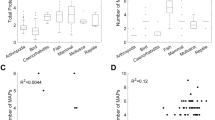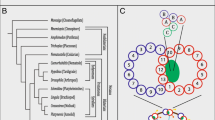Abstract
The echinoderm microtubule-associated protein (EMAP) is the most abundant microtubule-binding protein in the first cleavage mitotic apparatus in sea urchin embryos. The first goal of this study was to determine whether there is sufficient EMAP in the egg and embryo to modify microtubule dynamics during the early cleavages divisions and whether EMAP functions at a specific time or place in the embryo. To accomplish this goal, we examined the relative abundance, tissue distribution, and temporal pattern of EMAP expression during embryonic development. The second goal of this study was to identify important functional domains within the EMAP coding sequence. A conserved sequence might reveal a potential microtubule-binding domain. We cloned, sequenced and compared overlapping EMAP cDNAs from two different sea urchin species that diverged approximately 80 million years ago, and compared these with cDNA sequences from a vertebrate and nematode species. From quantitative immunoblots, we determined the EMAP concentration in eggs to be 4 µM. The steady-state levels of EMAP mRNA and protein accumulated during development, and all three germ layers expressed EMAP. During the early stages of development, EMAP and tubulin were both abundant in the ectoderm, mesoderm and endoderm. However, during late gastrulation and the formation of the early pluteus larvae, EMAP was enriched in the mesoderm, while tubulin staining was most abundant in the archenteron. These results indicate that EMAP may have tissue-specific functions in the late stage embryo. To identify conserved functional domains, we compared the predicted amino acid sequence encoded by Strongylocentrotus purpuratus and Lytechinus variegatus EMAP cDNAs, and determined that these two sea urchin EMAPs were 95% conserved and shared an identical domain organization. A parsimonious analysis of these sea urchin protein sequences, as well as human and C. elegans EMAP sequences was used to construct a gene tree. Together these results suggest that EMAP is an important microtubule protein required at all developmental stages of sea urchins, and whose cellular function may be conserved amongst metazoans.
Similar content being viewed by others
Author information
Authors and Affiliations
Additional information
Received: 2 March 1999 / Accepted: 28 June 1999
Rights and permissions
About this article
Cite this article
Suprenant, K., Tuxhorn, J., Daggett, M. et al. Conservation of the WD-repeat, microtubule-binding protein, EMAP, in sea urchins, humans, and the nematode C. elegans . Dev Gene Evol 210, 2–10 (2000). https://doi.org/10.1007/PL00008183
Issue Date:
DOI: https://doi.org/10.1007/PL00008183




